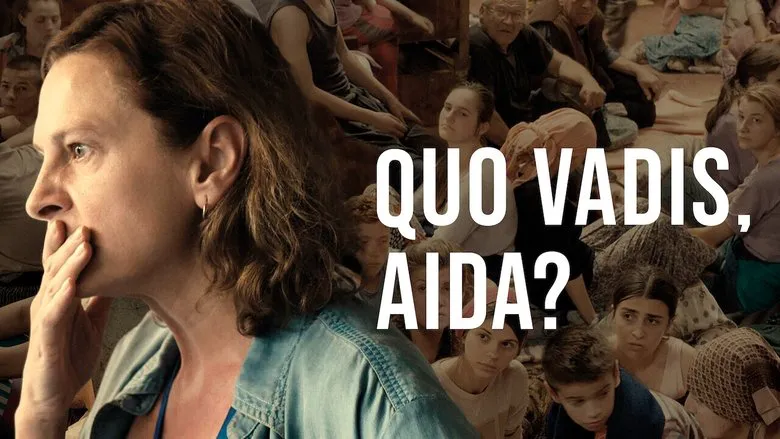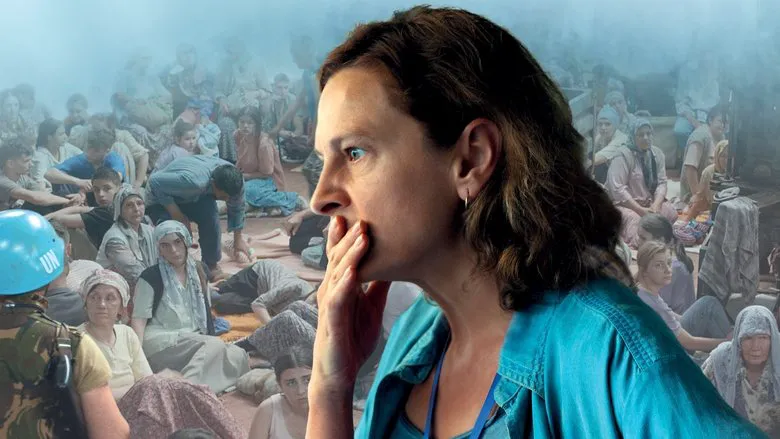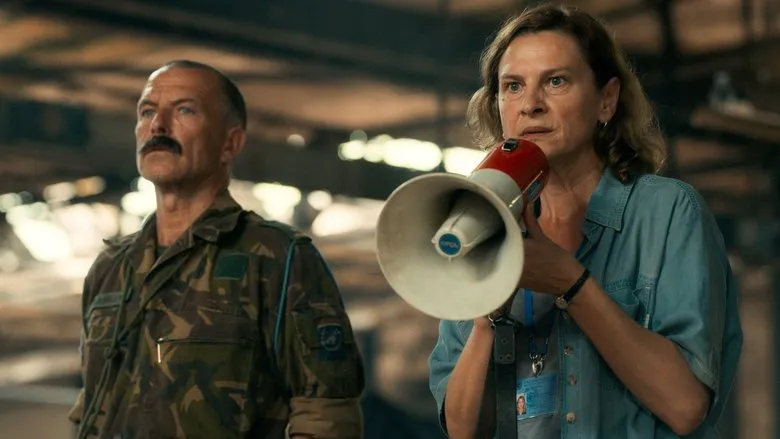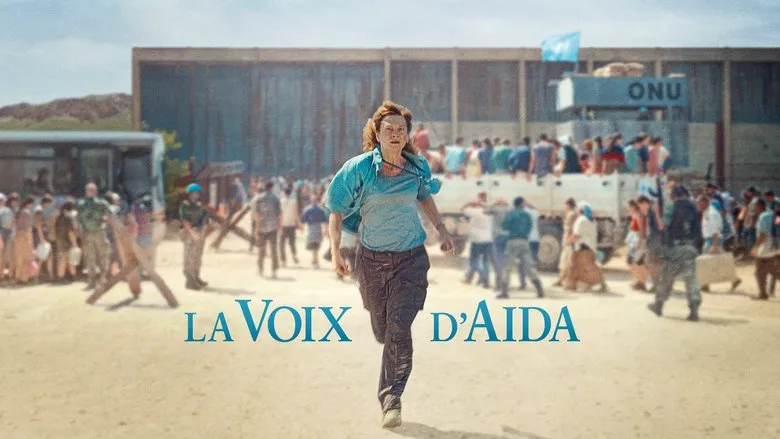Bearing Witness: The Genesis of “Quo Vadis, Aida?”
Jasmila Žbanić’s 2020 war drama, Quo Vadis, Aida?, isn’t merely a film; it’s a meticulously crafted testament to one of the darkest chapters in modern European history – the Srebrenica massacre of 1995. This deeply poignant feature was born from a profound need to articulate the human cost of unfathomable atrocities, electing to tell its story not through sweeping battle scenes, but through the intensely personal and harrowing experience of a translator caught in the epicenter of the unfolding genocide.
The Director’s Vision: Through Aida’s Eyes
The film’s very core lies in director Jasmila Žbanić’s deliberate choice to anchor the narrative to Aida Selmanagić, a fictional character exquisitely brought to life by Jasna Đuričić. This wasn’t merely a plot device; it was a fundamental cinematic decision designed to immerse the audience in the chaos, the moral quandaries, and the crushing helplessness of the Srebrenica crisis. Žbanić wanted to remove the academic distance from historical events, making the political a visceral, personal tragedy.

Set in the seemingly safe haven of the UN compound in Srebrenica, Žbanić masterfully builds tension around Aida’s dual roles: a professional conduit for critical information and a mother desperate to save her family. This narrative structure allows the film to explore universal themes of duty, survival, and the agonizing choices forced upon ordinary people in extraordinary circumstances. The film opens with Aida facilitating a tense meeting, immediately plunging viewers into the suffocating atmosphere of diplomacy on the brink of collapse, foreshadowing the horrific events to come.
Navigating the Implosion: Crafting Aida’s Moral Crucible
The progression of Quo Vadis, Aida? is a testament to sensitive and impactful storytelling. As the advancing Bosnian Serb army, led by General Ratko Mladić, closes in, the film meticulously portrays the UN compound becoming a fragile, overcrowded symbol of shattered hope. Žbanić’s direction emphasizes the sheer scale of the humanitarian crisis, capturing the desperation of thousands trapped, while simultaneously tightening the focus on Aida’s internal struggle.

The dynamic between Aida and Lieutenant-Colonel Karremans (Gijs Naber) is a dramatic fulcrum. Žbanić thoughtfully reveals the immense pressure on UN personnel, juxtaposed with the horrifying reality Aida recognizes: that surrender means massacre. This central conflict is not just a plot point, but a deliberate exploration of the systemic failures of international bodies, rendered through the anguish of one woman. The script carefully builds to the agonizing moment when Aida is tasked with persuading Bosniak leaders to surrender, effectively sealing their people’s doom.
“Žbanić’s unwavering focus on Aida’s perspective makes the tragedy deeply personal, translating historical facts into raw, human experience.”
The Weight of Portrayal: Authenticity and Emotion
Portraying the Srebrenica massacre demanded an immense commitment to authenticity and sensitivity. Žbanić’s team painstakingly recreated the harrowing atmosphere within and outside the UN compound, allowing the sound of distant artillery and panicked screams to become a relentless, unnerving score. This dedication ensures that while the film avoids gratuitous violence, the pervasive threat and emotional toll are vividly conveyed.

Jasna Đuričić’s portrayal of Aida is particularly crucial to the film’s emotional impact. Her raw, visceral performance encapsulates the character’s “struggle with her own moral compass,” making Aida’s journey of disillusionment with the UN’s inability to act heartbreakingly relatable. The scene where Aida’s family is separated from her, forcing an unthinkable decision, is delivered with a quiet power that is both devastating and unforgettable. The subtle yet profound ways in which she conveys fear, desperation, and a mother’s fierce protective instinct are central to the film’s resonance.
The Haunting Question: “Quo Vadis, Aida?”
The film’s evocative Latin title, translating to “Where are you going, Aida?”, serves as more than just a literal question about Aida’s desperate search for her family amidst the unfolding horror. It poses a haunting, universal query about humanity’s direction in the face of such evil and the moral responsibilities of all involved. Žbanić intends for the title and the film itself to serve as a poignant reminder of shattered values and missed opportunities for intervention.

Quo Vadis, Aida? is not just a historical drama; it’s a profound ethical examination. Žbanić doesn’t shy away from confronting the UN’s failures, leaving viewers to grapple with the agonizing question of moral accountability. By focusing on the personal tragedy within a geopolitical catastrophe, the film transforms statistics into unforgettable human stories, demanding critical self-reflection from its audience. It stands as a powerful testament to the victims of Srebrenica and an unflinching portrayal of the darkest aspects of human nature, leaving an indelible mark long after the credits roll.
